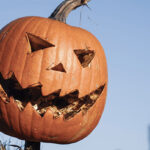
Birds Won’t Become Dependent On Your Bird Feeders, Study Finds
- Thomas Nelson
- October 8, 2023
- Animals, Nature
- 0 Comments
It’s a common sight across many homes in the United States — bird feeders teeming with different species of birds, all fluttering about and feasting on the generous offerings of homeowners. The act of feeding wild birds is not just a leisure activity; for many, it’s an expression of their love and appreciation for nature.
But one question persists for many of us: By feeding wild birds, are we making them dependent on us? Are we inadvertently harming them by making them less capable of sourcing food naturally?
A comprehensive study, conducted in 2021, led by Jim Rivers, an assistant professor of wildlife ecology at Oregon State University’s College of Forestry, dives deep into this very issue. His team’s findings offer fascinating insights.
Birds and Bird Feeders: A Background
According to the U.S. Fish and Wildlife Service, over 82 million people in the United States engage in the practice of feeding wild birds. The motivations are numerous — from pure recreational pleasure to the tangible benefits for both humans and birds. Particularly during extended periods of cold weather, bird feeders act as essential supplemental food sources for many bird species.
However, potential risks have been associated with bird feeding. A chief concern is whether birds would become too reliant on these feeders, compromising their natural foraging instincts and survival capabilities.
The Black-capped Chickadee: A Case Study
For their research, Rivers and his team focused on the Black-capped Chickadee, a species commonly found at winter bird feeders across northern U.S regions. Given the chickadee’s small size and high metabolic rate, these birds have high energy demands, especially during winter. Consequently, even minor dips in their foraging efficiency could threaten their survival.
To ascertain whether feeders influence a chickadee’s survival rate, the researchers marked and monitored two groups of chickadees: one that had used a bird feeder in the past (and could potentially be considered “dependent”) and another that had never been exposed to a feeder.
Key Findings
- Contrary to popular belief, the study found no discernible difference in the survival rates of both groups during a winter when feeders were absent. This means that birds which had previously frequented feeders were just as capable of surviving on natural food sources as those that never had.
- It was observed that even when feeders were available, chickadees sourced around 79% of their daily energy requirements from natural food sources.
The Bigger Picture
While the findings of the study are reassuring for bird enthusiasts, they come with caveats. The research was conducted in largely undisturbed rural habitats, and the dynamics might differ in urban settings where natural food sources are scarcer.
Additionally, while chickadees seem to balance their diet between feeders and natural sources, this might not be true for all bird species, especially migratory ones unfamiliar with their wintering areas.
The study concludes that for many bird species, feeders are probably just another food source, no different than any natural patch they might come across. While feeders can provide essential sustenance during harsh conditions, birds, by nature, are equipped with the instincts and adaptability to thrive in the wild.
This doesn’t mean we should become complacent about bird feeding. It remains essential to ensure that feeders are clean, positioned safely, and filled with appropriate food. But for those who’ve worried about making their feathered visitors overly dependent — rest easy. Nature, it seems, has equipped them well.
Pros and cons of feeding wild birds
Feeding wild birds is a popular pastime for many nature enthusiasts and can bring a lot of joy. However, like many human interactions with wildlife, there are both positive and negative aspects. Here are the pros and cons of feeding wild birds:
Pros:
- Observation and Education: Setting up bird feeders provides a unique opportunity for people to observe birds up close, making it a valuable educational tool, especially for children, to learn about different bird species and their behaviors.
- Support During Hard Times: In particularly harsh winter conditions where natural food sources might be scarce, bird feeders can be a lifeline for many bird species, providing them with essential nutrients.
- Attracts a Variety of Species: Having bird feeders can attract a wide range of bird species to your yard, some of which you might not commonly see.
- Encourages Interest in Nature: Feeding birds can nurture an interest in nature and wildlife, leading individuals to become more environmentally conscious and take part in conservation efforts.
- Economic Benefits: The bird feeding industry has economic advantages, creating jobs and supporting businesses that manufacture bird food, feeders, and related items.
Cons:
- Spread of Diseases: Bird feeders can sometimes become hubs for the spread of diseases among bird populations. If not cleaned regularly, feeders can harbor bacteria, mold, and other pathogens.
- Predation: Feeders can unintentionally become danger zones for birds. Predators such as cats or raptors might frequent the area, leading to increased vulnerability for the birds.
- Window Collisions: Birds visiting feeders near homes are more likely to collide with windows, which can often be fatal.
- Unwanted Guests: Bird feeders can attract pests like rats, raccoons, or squirrels. These animals might be drawn to the food and can sometimes become nuisances themselves.
- Nutritional Concerns: The food provided in feeders might not always meet the full nutritional needs of the birds, especially if they rely too heavily on it. It’s essential to provide a diverse and appropriate diet.
While feeding wild birds can be rewarding and beneficial in many ways, it’s crucial to do so responsibly. Regularly cleaning feeders, placing them away from windows, and providing appropriate and varied food can help mitigate some of the associated downsides.
How to feed local birds the right way
Feeding your local birds in a responsible and healthy manner can be rewarding for both you and the birds. Here’s a guide to doing it right:
- Diverse Diet: Birds require a range of nutrients, and providing a variety of foods will help cater to different species’ needs.
- Seeds: Sunflower seeds (both black oil and striped) are popular with many birds. Nyjer seeds are favorites of finches.
- Peanuts: Offer unsalted peanuts. They are loved by titmice, nuthatches, and woodpeckers.
- Fruit: Offer slices of oranges, apples, and other fruits. Orioles, robins, and tanagers often appreciate these.
- Provide Fresh Water: Fresh and clean water for drinking and bathing is just as essential as food. Maintain a bird bath with a heater in the winter if you can.
- Natural Foods: Encourage natural food sources by planting native trees, shrubs, and flowers that produce seeds, berries, or nectar that local birds prefer.
- Avoid “Filler” Seeds: Some commercial birdseed mixes have “filler” seeds that most birds don’t eat. Look for higher-quality mixes without fillers, or buy specific seeds mentioned above. Milo (sorghum) is a type of grain that is often used as a filler in birdseed mixes. It’s inexpensive and has low nutritional value. Milo is often used to lower the price of birdseed mixes.
- Clean Feeders Regularly: Mold, feces, and rotting food can be harmful. Clean feeders with a solution of one part bleach to nine parts water at least once a month, and ensure they are thoroughly dried before refilling.
- Safe Placement: Place bird feeders at least 10 feet away from shrubs or places where cats and other predators can hide. If placing near windows, ensure you have bird-safe window treatments to prevent collisions.
- Seasonal Consideration: Adjust the types of food offered based on the season. For instance, suet and high-fat foods are more appropriate in cold months.
- Avoid Bread: Contrary to popular belief, bread offers little nutritional value for birds and can lead to health problems. It can also attract unwanted pests.
- Stay Updated: Local birding groups or wildlife agencies can provide guidance on which birds are in the area during different seasons and their specific needs.
Remember, feeding birds is not just about providing food. It’s about creating a welcoming and safe environment for them. Supporting natural habitats by avoiding pesticides and creating bird-friendly gardens will go a long way in ensuring a healthy bird population in your area.

